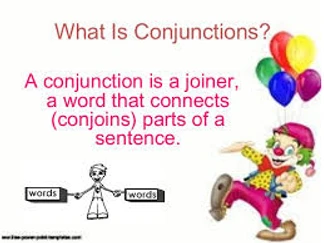Have I become a more astute writer in the past decade or so, or has the writing community become more sloppy? Did I in decades past make the same mistakes that I continually see these days in newspapers and other media?
I hope not, but maybe 10 years of copyediting late in my career made me more aware of errors that I was making along with a lot of other writers. Whatever, I’ve gathered a folder full of foibles committed daily in written communication.
Sin of Omission
One of them is omission of the conjunction and or or in a series of items. This is a ubiquitous deficiency. And, while it’s understandable that people less steeped in the art of writing – for example, those in the marketing and promotions fields – are not particularly punctilious with finer points of writing such as this, journalists must be held to a higher standard. My file contains eight examples of the and or or omission by people in nonjournalistic fields, and eight by newspaper writers.
I was surprised, and a bit dismayed, to happen upon the error in an article on the Affordable Care Act by Robert Pear, venerable reporter for the New York Times. He wrote: “Federal health officials said Monday that the shorter application had fewer pages and questions, fewer screens to navigate, and would allow people to sign up with fewer clicks of a computer mouse.”
That sentence is actually two sentences in one: a compound sentence. Each of the two subsentences, we’ll call them, contains a verb – had in the first, and would allow in the second. Thus, the first part should be treated as though navigate were the end of a sentence. In that case, and is needed to join the items that go with the verb had: “the application had fewer pages and questions, and fewer screens to navigate.” The next and connects the two subsentences: “and would allow people …” The verb for both sub-sentences is application. Putting it all together, we have: “Federal health officials said Monday that the shorter application had fewer pages and questions, and fewer screens to navigate, and would allow people to sign up with fewer clicks of a computer mouse.”
Moving right along, here’s one in the Pittsburgh Post-Gazette. “As a first generation college graduate, 24-year-old Ciera
Young has wondered whether her bachelor’s degree gives her an edge or puts her at a disadvantage when she considers that she has no savings, no car and is obligated to repay student debt while trying to get a foothold in the job sector.” This long-winded lead to a story has so many subsentences that separating them is like dissecting a frog in a biology class. For this exercise, the two we’re concerned with is “she has no savings, no car and is obligated to repay student debt.” The verb in the first is has, and it has two objects: savings and car, which is the end of that subsentence. But written as is, it’s incomplete. The two objects must be connected with and: “she has no savings and no car.” The second of the two subsentences is “(she) is obligated to repay student debt.” Is obligated is the verb.
As a story in the Orange County Register demonstrates, and is not the only conjunction that is sometimes missing in compound sentences. A report about the Transportation Security Administration (whatever that is) holds that “if a private security company is wasteful, ineffective or tolerates widespread abuse …” Again, there are two verbs: is and tolerates. Is refers to the adjectives wasteful and ineffective, which must be joined – in this case by the conjunction or. Thus, dropping the conditional if, we have “a private security company is wasteful or ineffective.” A comma should come after ineffective to separate that first subsentence from the one to follow. The second verb is tolerates, and has abuse as its direct object. So the whole thing should read: “if a private security company is wasteful or ineffcctive, or tolerates widespread abuse.”
Et tu, AP?
The Associated Press wrote: “It is clear that Carter was intoxicated, resisting officers, uncooperative and attempted to flee multiple times.” There are two verbs: was and attempted. Three items are connected to was, and they all are in the first subsentence, which ends with uncooperative. It is the last item, which must be made clear with and preceding it. Attempted is the verb of the second sentence.
Two more newspaper examples, both by Palm Beach Post writers: (1) “Guardians and their attorneys can liquidate long-held stocks, bonds, insurance policies and sell property.” It should read “bonds and insurance policies, and sell property.” (2) “The project is economically unfeasible, unsafe and threatens …” Correct: “unfeasible and unsafe, and threatens …”
We can’t let nonjournalists off the hook. This beauty is from a mattress company’s website: “Higher density foam holds less air while resisting compression, softening, and wears better overall.” At least you don’t go to sleep trying to figure out the meaning. Here’s what apparently was meant: “Higher density foam holds less air while resisting compression and softening, and wears better overall.” If the writer hadn’t resisted use of and, the sentence would be much more clear.

